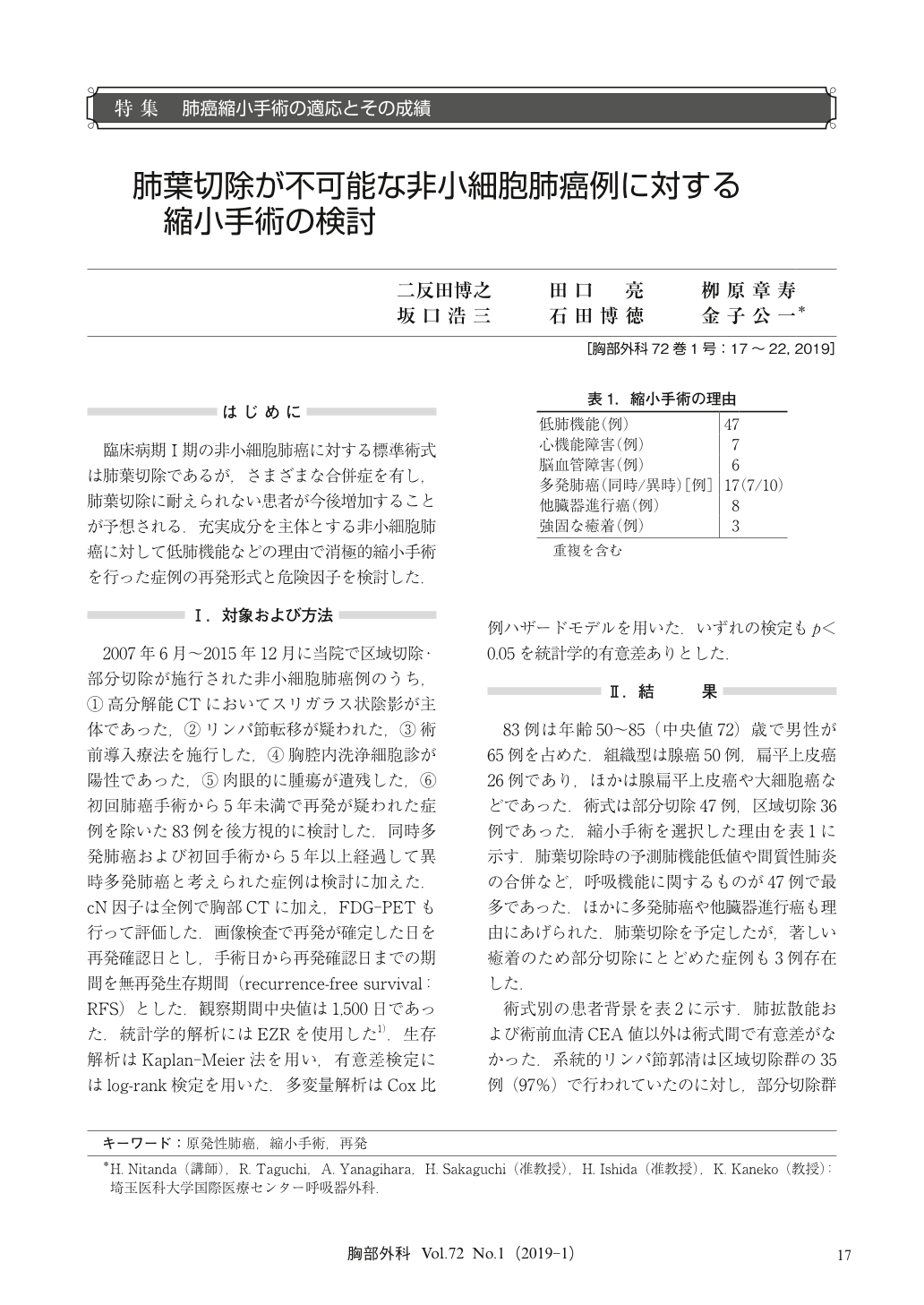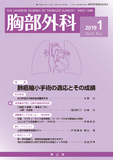Japanese
English
- 有料閲覧
- Abstract 文献概要
- 1ページ目 Look Inside
- 参考文献 Reference
臨床病期Ⅰ期の非小細胞肺癌に対する標準術式は肺葉切除であるが,さまざまな合併症を有し,肺葉切除に耐えられない患者が今後増加することが予想される.充実成分を主体とする非小細胞肺癌に対して低肺機能などの理由で消極的縮小手術を行った症例の再発形式と危険因子を検討した.
Objectives:Pulmonary lobectomy is the standard surgical procedure for resectable non-small cell lung cancer (NSCLC), while sublobar resection is an important surgical alternative for high-risk patients with comorbidities. We evaluated the treatment outcome and prognostic factors of sublobar resection in high-risk patients with NSCLC.
Methods:Eighty three high-risk patients who underwent compromised sublobar resection for clinical-N0 NSCLC with a solid appearance were retrospectively reviewed. A total of 47 wedge resections and 36 segmentectomies performed.
Results:Poor pulmonary function and synchronous or metachronous multiple lung cancer were found in 56.7% and 20.5% of patients respectively, all requiring sublobar resection. There were 21 instances of tumor recurrence and 24 deaths during a mean follow-up of 1,500 days. There was no local recurrence in the segmentectomy group. The 3-year recurrence free survival (RFS) and overall survival (OS) were 72.6% and 73.8% respectively. A multivariate analysis indicated that resection type and lymphatic invasion were independent prognostic factors for RFS. In the wedge resection group, a ratio of surgical margin to clinical tumor size greater than 1 (MT ratio≧1) was an independent prognostic factor for RFS (87.1%,p=0.001).
Conclusion:Segmentectomy leads to a favorable prognosis. MT ratio was independently associated with a longer RFS in the wedge resection group.

© Nankodo Co., Ltd., 2019


